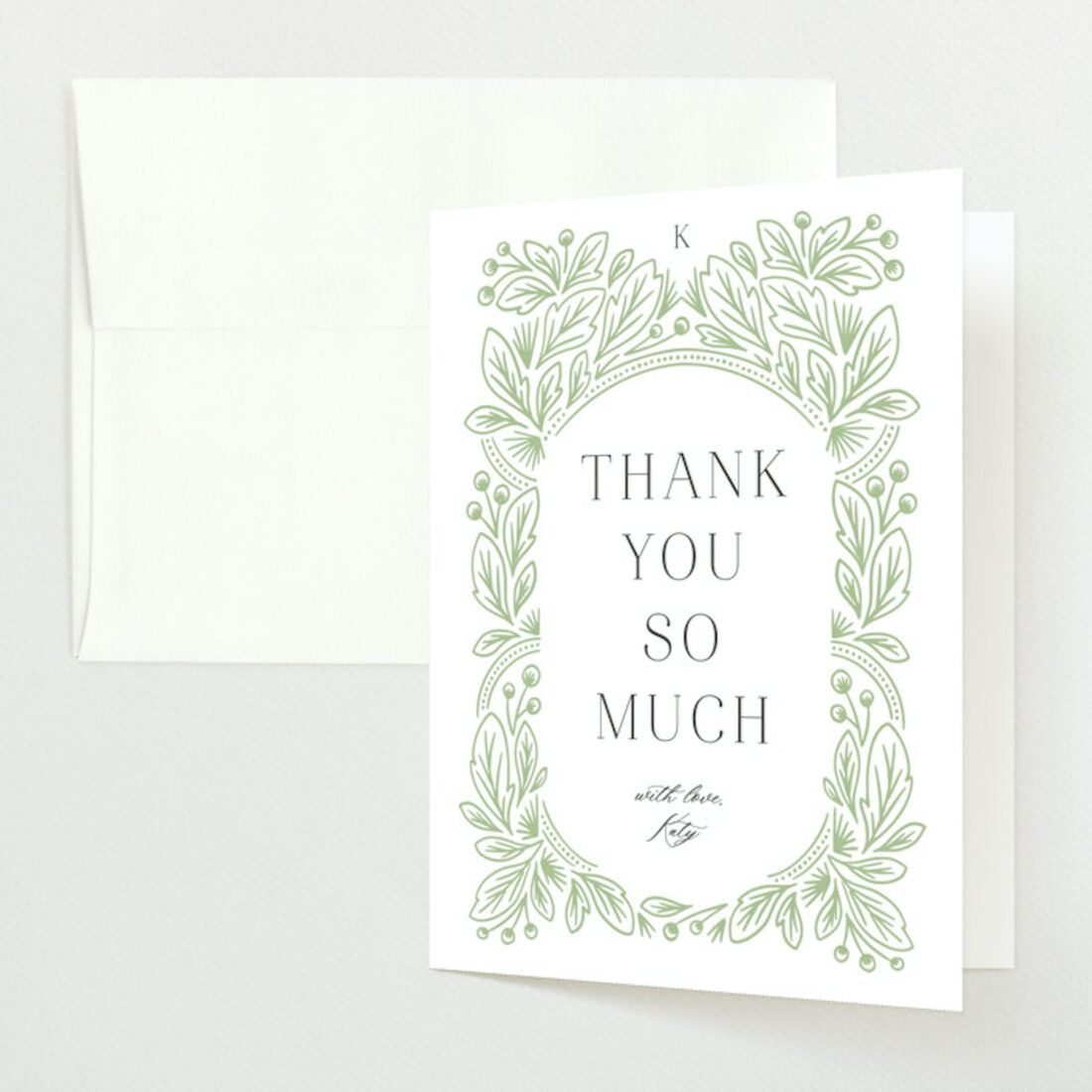Like setting a table, mastering long division, and knowing how to suppress a giggle during a church sermon, learning how to write a proper thank-you note is equal parts essential lesson and unbearable bane of any Southern child’s upbringing. Even as an adult, there are few tasks as daunting as staring down a pile of blank stationery, pen in hand. The gratitude is there, but so often the words won’t come.
But writing a thank-you note is a commandment for a reason, and nothing is more appreciated than a note of appreciation—yes, for gifts, but also after dinner parties, kind gestures from friends, and in the Alabama-born writer Helen Ellis’s case, even a particularly paramount dentist appointment.

I got married last spring and over the past year have become very well acquainted with my neighborhood Post Office drop-box. One thing I’ve learned in the interim: Everyone has an opinion about thank-you notes. I don’t claim to be an expert. I’m not going to tell you how to address your great-aunt’s next-door neighbor or advise on the best sign-off (but for what it’s worth, sincerely has always felt less than sincere to me). I’m not even going to take a stand on which occasions warrant the effort. But some people are sending thank-you texts, for crying out loud, so if you’re still licking envelopes, that’s enough for me.
In order to make thank-you note writing a little more bearable—dare I say even enjoyable—you have to reframe them. They are not a chore. You do not have to write them, despite the perceived weight of expectation. Your mother is no longer standing over your shoulder at the kitchen table making sure it gets done (although she may be on the other end of the telephone, reminding you that Susan-Down-The-Street wants to make sure her gift got there).
Rather, thank-you notes are an opportunity to tell someone how much they mean to you—and what a joy that is. How often do you get to thank your coworker for putting up with your sour Monday moods, your sixth-grade teacher for their patience, or your childhood best friend’s parents for hosting you for all those sleepovers?
Here are my three best tips for getting through your thank-you note list with as much enjoyment as possible.
1. Write from the heart.
I called my grandmother the other day, just as she was sitting down to write a thank-you note for a meal her neighbors left on her doorstep when she was sick. “I like the idea of writing these things,” she said to me. “But it’s just so hard to get the words right.”
I feel you, Nana.
But the good news: There is no right thing to say. Of course, there are plenty of wrong things to say, but as a polite and reasonable human, you probably won’t feel inclined to tell someone you returned their thoughtful-but-tacky gift immediately upon opening it, or that the pound cake they made was a tad too dry for your liking.
It may be counterintuitive, but in order to keep things authentic, I use a very loose thank-you note formula. No two end up identical, of course, but I’ve found them less daunting if I start with a roadmap. I begin each note by thanking the person for their gift (or gesture or hospitality or kindness. etc.), being as specific as possible. What have I cooked in the Instant Pot? Where does the flower vase sit in my house? How many times have I dreamed about that salad they made me and where might I be able to find the recipe? Then, I transition into thanking them more broadly—maybe for being a good friend, or for guiding me through a certain life stage, or for the levity their relationship adds to my day. I’ve found that once I get into this part of the note, the gratitude really starts to flow.
2. It’s okay to be brief.
“Short and sweet” is a cliché for a reason. A thank you note is not a novel, nor does anyone want it to be.
My advice: Completely fill a small card. While lots of Southern makers craft beautiful paper goods worthy of framing, I keep a stash of monogrammed stationery from the “Baby & Kids” section on minted.com (which are both a tad smaller and cheaper than the adult stuff). Just be sure to customize the font, color, and wording so it doesn’t feel like an invitation to a baby shower.
Then get writing. If you just fill up the front, that’s fine, but I like to choose cards with a blank back just in case I have more to say. Once I get started, I typically do.
3. Be timely if you can. (But if you can’t be timely, be sincere.)
As a master procrastinator, this one is hard for me. I’ll often leave my box of stationery out in my living room as a reminder to keep chipping away at my list, but it can easily begin to blend into the landscape, becoming as much a part of the décor as the coffee table books.
Of course, the best plan of action is to buckle down and write them immediately. (Isn’t that always the best anti-procrastination advice?)
Luckily, in my experience on both ends of the note-sending-and-receiving pipeline, being sincere (see tip #1) can make up for a lack of urgency. If you’re going to be late, you might as well take your time and say what you really mean. And since we’re running with the clichés today, I do believe this is a case of better late than never. No matter how much time has passed, thanking someone for a gesture they made long ago will still brighten their day—and if you reframe it as an opportunity to express genuine gratitude, it just might brighten yours, too.








